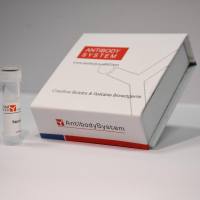Intracellular pH Measurements In Vivo Using Green Fluorescent Protein Variants
互联网
互联网
相关产品推荐

InVivoMAb 抗小鼠 CD274/PD-L1/B7-H1 Antibody (10F.9G2),InVivo体内功能抗体(In Vivo)
¥2700

Coronavirus Nucleocapsid重组蛋白|Recombinant SARS-CoV-2 Nucleocapsid-AVI&His recombinant Protein,Biotinylated
¥4520

SUP-B15 人Ph+急淋白血病细胞系
¥1550

Spike S1 Neutralizing Antibody (B.1.617.2, B.1.617.2.1, B.1.1.7, B.1.351, B.1.429, and P.1 Variants) (Clone C-A11) (SARS-CoV-2)
询价

GFP重组蛋白|Recombinant Aequorea victoria Green fluorescent protein/GFPSparkTM(His Tag)
¥3870
相关问答

